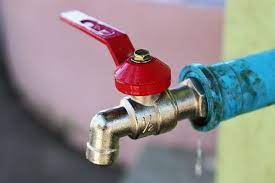Water is an essential part of our daily lives, but it can also become a source of significant stress and damage when it goes where it shouldn’t. Whether it’s a burst pipe, a leaking fixture, or a plumbing emergency, having the knowledge and tools to control your home’s water supply is crucial. This is where the main water shut-off valve comes into play – a relatively simple yet incredibly important component that can save you from potential water disasters.
Understanding the Main Water Shut-Off Valve: The main water shut-off valve, often located near the water meter or where the main water line enters your home, is your first line of defense against unexpected water-related mishaps. This valve has the power to completely stop the flow of water into your home, giving you the ability to control and mitigate potential damage in emergencies.
Importance of Knowing Its Location: Before you find yourself knee-deep in water during a plumbing crisis, it’s essential to know the exact location of your main water shut-off valve. In many households, it’s found in the basement, crawl space, garage, or utility room. Mark its location and ensure that it’s easily accessible, allowing you to act swiftly during an emergency.
When to Use the Main Water Shut-Off Valve:
- Burst Pipes: A burst pipe can flood your home within minutes. Turning off the main water supply is the first step to limiting the damage and buying yourself time until professional help arrives.
- Leaky Fixtures: If a faucet, toilet, or any other fixture is leaking uncontrollably, shutting off the main water supply can prevent further water wastage and damage.
- Extended Absences: When you’re away from home for an extended period, turning off the main water supply can prevent potential leaks or pipe bursts from causing extensive damage in your absence.
- Plumbing Repairs: Before embarking on DIY plumbing repairs or calling in a professional, it’s a good practice to turn off the main water shut-off valve to prevent accidental flooding.
How to Turn Off the Main Water Shut-Off Valve:
- Locate the Valve: Familiarize yourself with its location before an emergency arises.
- Turn the Valve: Most shut-off valves require a quarter-turn to either shut off or turn on the water supply.
- Test the Shut-Off: Once the valve is turned off, check faucets to ensure the water supply has been successfully stopped.
Regular Maintenance and Checks: To ensure that your main water shut-off valve remains functional when you need it the most, perform periodic checks. Over time, valves can become stiff or corroded, making them difficult to operate. Lubricate the valve as needed and make sure it’s in proper working condition.
